Thư viện Mediapipe cung cấp tính năng Facemesh detection rất nhanh & chính xác. Hôm nay mình sẽ giới thiệu về khả năng, cách dùng & source code để detect facemesh.
Theo lý thuyết Mediapipe detect được 468 điểm trên khuôn mặt theo như hình bên dưới. Click vào ảnh để xem full size (4096 x 4096px) và index của các điểm.
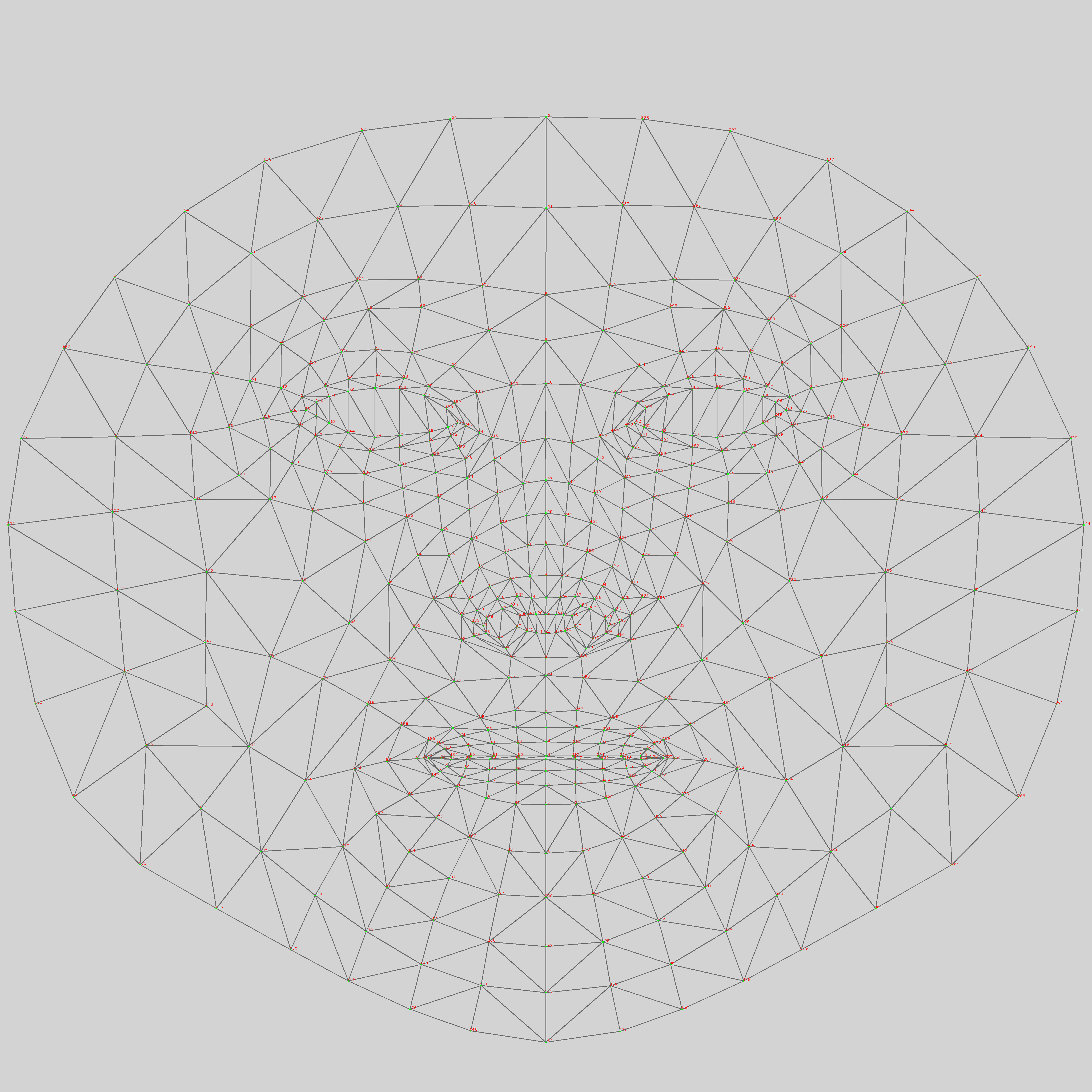
Dựa vào các điểm đó các bạn có thể biết được 1 số thứ như:
- Mắt nhắm hay mở: dùng cho phát hiện người buồn ngủ
- Miệng đóng hay mở: đang cười hoặc nói
- Xoay trái hoặc xoay phải
- …
Ứng dụng FaceComp sử dụng mediapipe để phát hiện khi khuôn mặt nhìn trực diện thì mới nhận diện
Cài đặt thư viện
Sử dụng Python 3.6 trở lên trên Windows 10 hoặc Ubuntu 18.04 (OS khác chưa test)
pip install mediapipe
Bước 1: tìm landmarks
Landmark là tập hợp các điểm trên khuôn mặt trong tọa độ 3D (x, y, z), tìm landmarks (có s, số nhiều) là tìm nhiều khuôn mặt trong ảnh nếu có.
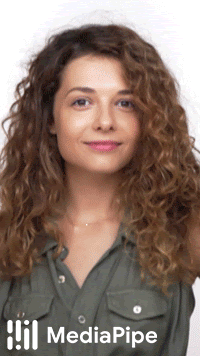
Thuật toán sẽ map tọa độ theo hệ trục 3D có nghĩa là bạn sẽ có thêm trục Z, dùng để tính được khoảng cách xa gần. Sau khi tìm được landmarks chúng ta vẽ tọa độ bằng function có sẵn của mediapipe.
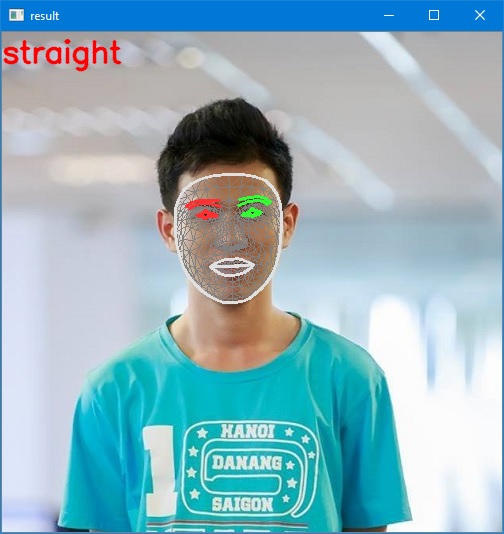
Bước 2: convert landmark to points để tính toán
Trong bài nảy mình sẽ làm ví dụ mẫu về tính toán góc xoay trái phải của khuôn mặt. Tương tự các bạn có thể xác định mở mắt hay nhắm mắt, mở miệng hay không.
Để xác định xoay hướng nào cần xác định 2 nửa khuôn mặt trái và phải tính từ mũi (center)
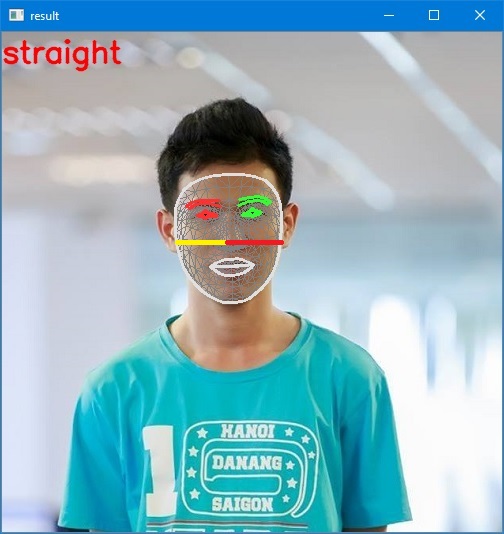
Tra cứu theo coordinate ta có điểm trung tâm (lỗ mũi) là 5, má trái là 234 và má phải là 454.
So sánh giá trị trái phải, lấy giá trị lớn hơn chia cho giá trị nhỏ hơn ta được tỷ lệ. Tùy theo nhu cầu sử dụng các bạn có thể set ngưỡng cho phù hợp từ 2.0 -> 3.0 (hoặc tùy ý)
|
1 2 3 4 5 6 7 8 9 10 11 12 13 14 15 16 17 |
def DetectDirection(landmark): left = CalcDistance(landmark[5], landmark[234]) right = CalcDistance(landmark[5], landmark[454]) threshold = 2.5 result = "straight" if(left < right): ratio = right / left if(ratio > threshold): result = "left" elif(right < left): ratio = left / right if(ratio > threshold): result = "right" return result |
Một số ví dụ
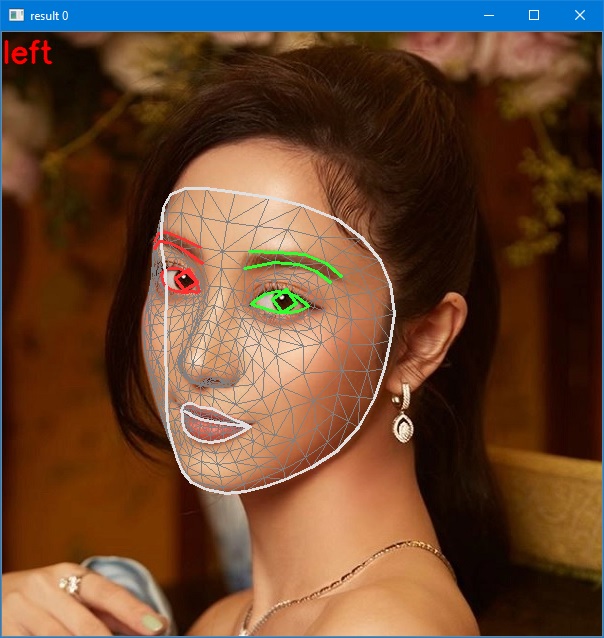
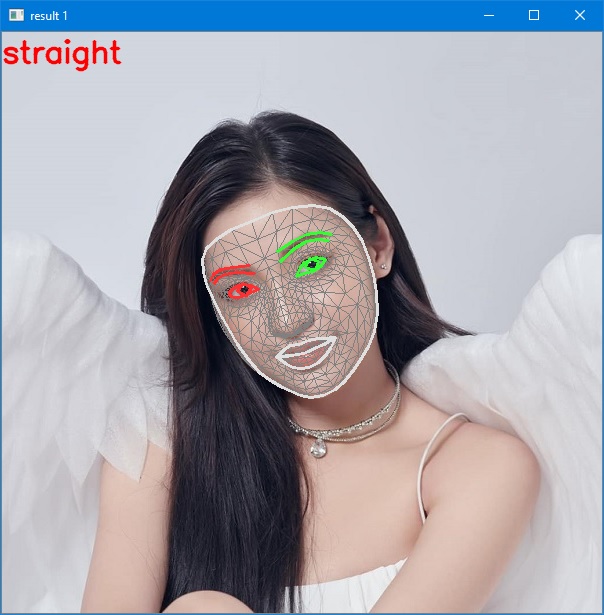
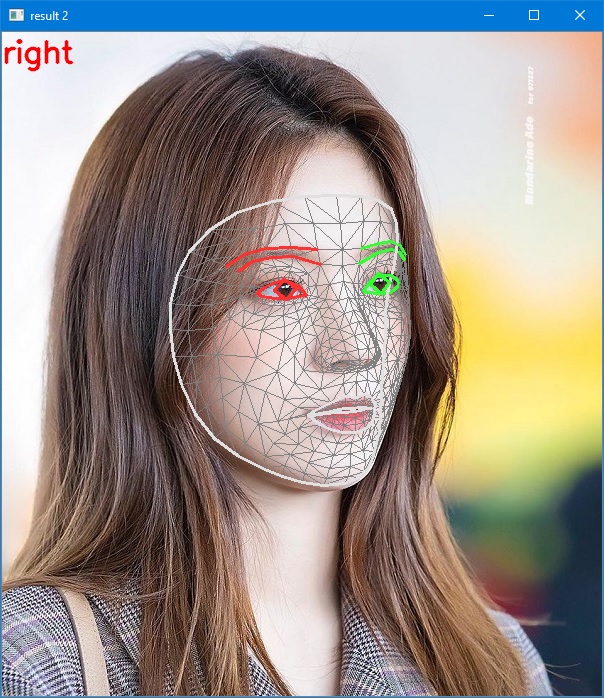
Full source code
|
1 2 3 4 5 6 7 8 9 10 11 12 13 14 15 16 17 18 19 20 21 22 23 24 25 26 27 28 29 30 31 32 33 34 35 36 37 38 39 40 41 42 43 44 45 46 47 48 49 50 51 52 53 54 55 56 57 58 59 60 61 62 63 64 65 66 67 68 69 70 71 72 73 74 75 76 77 78 79 80 81 82 83 84 85 86 87 88 89 90 91 92 93 94 95 96 97 98 99 100 101 102 103 104 105 106 107 108 109 110 111 112 113 114 115 116 117 118 119 120 121 122 123 124 125 126 127 128 129 130 131 132 133 134 135 136 |
import math import time import cv2 import mediapipe as mp mp_drawing = mp.solutions.drawing_utils mp_drawing_styles = mp.solutions.drawing_styles mp_face_mesh = mp.solutions.face_mesh face_mesh = mp_face_mesh.FaceMesh( static_image_mode=True, max_num_faces=1, refine_landmarks=True, min_detection_confidence=0.5) #################################################################################################### def ConvertToPoint(landmark): return [landmark.x, landmark.y, landmark.z] #################################################################################################### def CalcDistance(point1, point2): x1, y1, z1 = ConvertToPoint(point1) x2, y2, z2 = ConvertToPoint(point2) distance = math.sqrt((x1 - x2)**2 + (y1 - y2)**2) return distance #################################################################################################### def DetectLandmarks(frame): results = face_mesh.process(cv2.cvtColor(frame, cv2.COLOR_BGR2RGB)) if not results.multi_face_landmarks: print("no face") return None landmarks = results.multi_face_landmarks return landmarks #################################################################################################### def DetectDirection(landmark): left = CalcDistance(landmark[5], landmark[234]) right = CalcDistance(landmark[5], landmark[454]) threshold = 2.5 result = "straight" if(left < right): ratio = right / left if(ratio > threshold): result = "left" elif(right < left): ratio = left / right if(ratio > threshold): result = "right" return result #################################################################################################### def DrawLandmark(frame, landmarks): mp_drawing.draw_landmarks( image=frame, landmark_list=landmarks, connections=mp_face_mesh.FACEMESH_TESSELATION, landmark_drawing_spec=None, connection_drawing_spec=mp_drawing_styles .get_default_face_mesh_tesselation_style()) mp_drawing.draw_landmarks( image=frame, landmark_list=landmarks, connections=mp_face_mesh.FACEMESH_CONTOURS, landmark_drawing_spec=None, connection_drawing_spec=mp_drawing_styles .get_default_face_mesh_contours_style()) mp_drawing.draw_landmarks( image=frame, landmark_list=landmarks, connections=mp_face_mesh.FACEMESH_IRISES, landmark_drawing_spec=None, connection_drawing_spec=mp_drawing_styles .get_default_face_mesh_iris_connections_style()) #################################################################################################### # For static images: IMAGE_FILES = [] startTime = time.time() if(len(IMAGE_FILES) > 0): for idx, file in enumerate(IMAGE_FILES): frame = cv2.imread(file) landmarks = DetectLandmarks(frame) if(len(landmarks) == 0): continue landmark = landmarks[0].landmark direction = DetectDirection(landmark) DrawLandmark(frame, landmarks[0]) cv2.putText(frame, direction, (0, 30), cv2.FONT_HERSHEY_SIMPLEX, 1, (0,0, 255), 2, cv2.LINE_AA) cv2.imshow("result {}".format(idx), frame) print("Elapsed: " + str(time.time() - startTime)) cv2.waitKey() else: #không có ảnh truyền vào thì đọc webcam cap = cv2.VideoCapture(0) while cap.isOpened(): success, frame = cap.read() if not success: print("Ignoring empty camera frame.") # If loading a video, use 'break' instead of 'continue'. continue landmarks = DetectLandmarks(frame) if(len(landmarks) == 0): continue landmark = landmarks[0].landmark direction = DetectDirection(landmark) DrawLandmark(frame, landmarks[0]) cv2.putText(frame, direction, (0, 30), cv2.FONT_HERSHEY_SIMPLEX, 1, (0,0, 255), 2, cv2.LINE_AA) cv2.imshow("result", frame) if cv2.waitKey(5) & 0xFF == 27: break |
Kết luận
Mediapipe detect facemesh rất nhanh & chính xác, các bạn có thể an tâm sử dụng trong nhiều bài toán. Dựa vào cách làm ở trên các bạn có thể detect mặt nghiêng góc bao nhiêu độ,… Chúc các bạn thành công